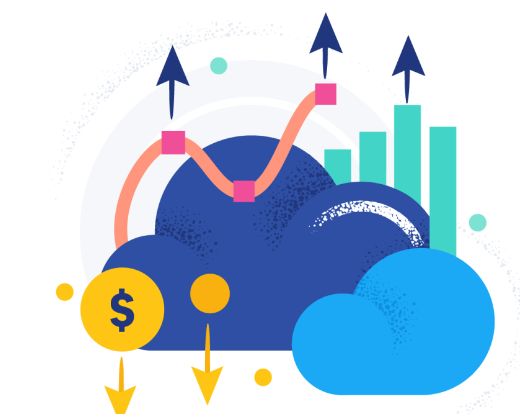How to Reduce Cloud Costs: Essential Tips for App Developers
Developers

The cloud is at the heart of most business transactions and operations. From processing massive data generated by IoT devices to improving your online shopping experience, the cloud is an essential part of our lives. For today’s app developers, there are many advantages to working in the cloud, like top-notch performance and scalability. But all these great features come with a cost, and you may find your cloud spend quickly running out of control.
Rising cloud expenses can take up a large amount of your organization’s budget, so it’s critical to keep an eye on cost and usage and match it to your business objectives. In particular, the pay-as-you-go model of cloud spending that many app developers use can result in unexpectedly large costs if you don’t carefully manage it.
To tackle cloud cost challenges for app developers, you’ll need a focused approach. Techniques like rightsizing instances, optimizing code, and leveraging serverless functions can help reduce costs and maximize the return on your cloud investment. It’s also crucial to implement practices such as ongoing monitoring and right-sizing resources. Here are some strategies for managing cloud costs like a pro while maintaining optimal performance on your apps.
Understanding Cloud Costs

Cloud resources can be complex, making it difficult for app developers to choose the best cloud usage options. There are so many options available from different cloud providers, such as pay-as-you-go, reserved instances, and hourly or monthly billing.
Billing granularity for certain services, such as computing, storage, and data transfer (each with its pricing tiers and constraints), adds even more complexity to the cloud computing picture. When you’re looking at cloud usage for your own app, here are the three elements that take up the majority of most companies’ cloud investments.
Cost element #1: Data storage
Cloud costs for storage are related to the volume of data stored and the length of time it is kept there. The storage type you select has a big impact on your cloud bill, as well as data retention and deletion policies. Data access patterns and frequency can also affect pricing, with frequently accessed data often incurring higher cloud costs than rarely accessed archival storage.
Cost element #2: Computing power
Computing power needed to properly execute is typically the biggest expense in app deployments. It is directly related to the quantity of virtual machines (VMs), or cloud instances, as well as their specs (CPU, RAM), and operating time. Rightsizing VMs to match actual cloud resource usage can help to reduce unnecessary cloud costs.
Cost element #3: Data transfer
The data transfer includes costs for transferring data into and out of the cloud environment. These expenses mount up rapidly, particularly if your company needs to move a lot of data between its on-premises infrastructure and its cloud instances, or between other regions or services. Inbound data transfers (ingress) are often free or priced at a lower rate, but outbound transfers (egress) can be significantly more expensive. Cloud billing typically varies based on the volume of data transferred and the destination, with transfers between different cloud environments or geographic regions usually incurring higher fees.

These factors could complicate your cloud usage and increase the difficulty of managing cloud costs. By focusing on the above 3 elements as a foundation for cloud cost management, you can start to put together a strategy to lower your cloud expenditures and improve organizational efficiency.
Utilizing Cloud Cost Management Tools
Cloud management tools provide visibility into your cloud infrastructure and resource usage, enabling you to monitor usage patterns and identify cost savings while maintaining performance for your app. By automating routine cloud management tasks and providing insights into your cloud environment, these tools can help you make informed decisions to maximize the value of your cloud investments.
There are several such tools on the global market, including Google Cloud cost management, IBM Turbonomic, Harness, Flexera One, CloudHealth, and Densify.
In choosing a cloud cost management tool, it’s important to consider features that optimize your cloud investments and support future decision-making. Here are some aspects to consider:
Cost allocation
To ensure accurate budgeting, you’ll need to break down the expenses by department, project, and team.
Comparison
To evaluate the accuracy of your budgets and establish well-informed cloud cost management strategies based on past data, you’ll need to compare your actual vs. expected cloud costs.
Data collection
A strong cloud cost management system easily connects via APIs with most public cloud providers, collecting data on resource utilization, expenses, and billing data for virtual machines, databases, storage, and networking.
Data aggregation and consolidation
By centralizing data from various cloud accounts, locations, and services, a single view of cloud spending is created, which aids in improved supervision and management.
Historical data analysis
By combining historical data with real-time statistics, you can detect trends and patterns that allow for proactive capacity planning and resource management. AI and machine learning are great tools to use for this cost analysis.
Data visualizations
Clear insights into cloud spending trends are provided by intuitive visual tools like graphs, charts, and dashboards. These aid in improving understanding, especially regarding executive stakeholders, and anticipating future cloud costs.
Custom report generation
To achieve informed decision-making and facilitate internal communication, you’ll need to create and export customized cloud spend reports that highlight particular KPIs.
Best Developer Practices for Cloud Cost Optimization
Effective cloud cost optimization requires a collaborative approach between developers and cloud architects. By optimizing cloud services through cost-effective storage, shutting down unused servers, modernizing applications with containers, and using data and AI/ML products, enterprises can optimize cloud costs while increasing revenue. That means even when your overall cloud spend is going up, you’ll still come out ahead. Here we list some of the most effective practices for cloud cost optimization that app developers can follow to make the most of their cloud expenditures:
1. Monitor and fix cost anomalies
Seasonality often causes fluctuations in cloud consumption (and consequently cloud spend), but you should always monitor for any unexpected increases and out-of-band spending. The tools mentioned above can track cloud spending automatically, enabling you to respond to cost management challenges before they affect your budget.
2. Choose the right storage type
Some of the most popular cloud storage solutions for app developers are Minio, NextCloud, NFS File Server, PureFTPd, and FreeNAS. They offer nearly infinite storage, are simple to use, and can be easily integrated with a wide range of different services from third parties. To manage expenses, you should be aware of the different storage tiers. Within the storage, you should determine which buckets are accessed frequently and which are not, and choose your storage tier appropriately.
3. Automate infrastructure during provisioning
With proper cloud automation tools, you can quickly create, test, and expand your cloud infrastructure. Automation can be achieved by employing cloud cost management tools to continuously monitor and modify resource allocations, putting scripts in place to shut down unused cloud instances, and configuring auto-scaling to adapt resources based on demand. Automation not only helps in reducing cloud costs but also ensures cloud continuous integration and continuous deployment (CI/CD) pipeline.
4. Right-size your cloud resources proactively
Choose instance types that align with your application’s specific resource requirements to avoid overprovisioning or underprovisioning. Hundreds of distinct instance types are available from most cloud providers, and each is appropriate for a different workload. Even for skilled developers, choosing the ideal instance can be daunting. If you choose the wrong instance size and use completely suboptimal instance families, it may result in huge instances. Or you could raise cloud computing resources, forget about them, and let them sit idle.
5. Get rid of cloud waste
Controlling cloud costs requires locating and removing waste. You should audit your settings frequently to find underutilized or infrequently used cloud resources like idle virtual machines, out-of-date snapshots, and unnecessary storage. By only purchasing what you need, cutting these resources out of your budget instantly lowers your cloud costs.
6. Utilize metadata for cost reduction
Cloud resource organization can be effectively achieved through the use of resource management and tagging. Your company can easily monitor resource utilization and expenses by department, project, or application by utilizing a consistent tagging approach that assigns metadata to its resources. This improved visibility facilitates more precise billing and discovers possible areas for cloud cost reduction.
7. Pause your idle clusters when not in use
In the cloud, clusters provide great data warehousing possibilities. With massively parallel processing (MPP), clusters help app developers and teams sort through enormous volumes of data and integrate with storage solutions. Compute and storage resources are mixed to form clusters. When you operate clusters on demand, you are still responsible for paying for those compute nodes, e.g. on weekends when your clusters might not be in use. To reduce idle cluster spending, ensure that you’re utilizing the pause and resume capability.
Conclusion
To effectively optimize costs, you need a proactive and strategic approach. By understanding the key cost drivers, leveraging optimization techniques, and utilizing cloud management tools, you can significantly reduce your cloud expenses while maintaining performance and achieve your business objectives.
Continuously monitoring and analyzing your cloud usage is essential to identify cost-saving opportunities and ensure that your cloud resources are being utilized efficiently. By implementing these strategies, you can optimize your cloud investment—and make a great app—while maintaining a healthy bottom line.


